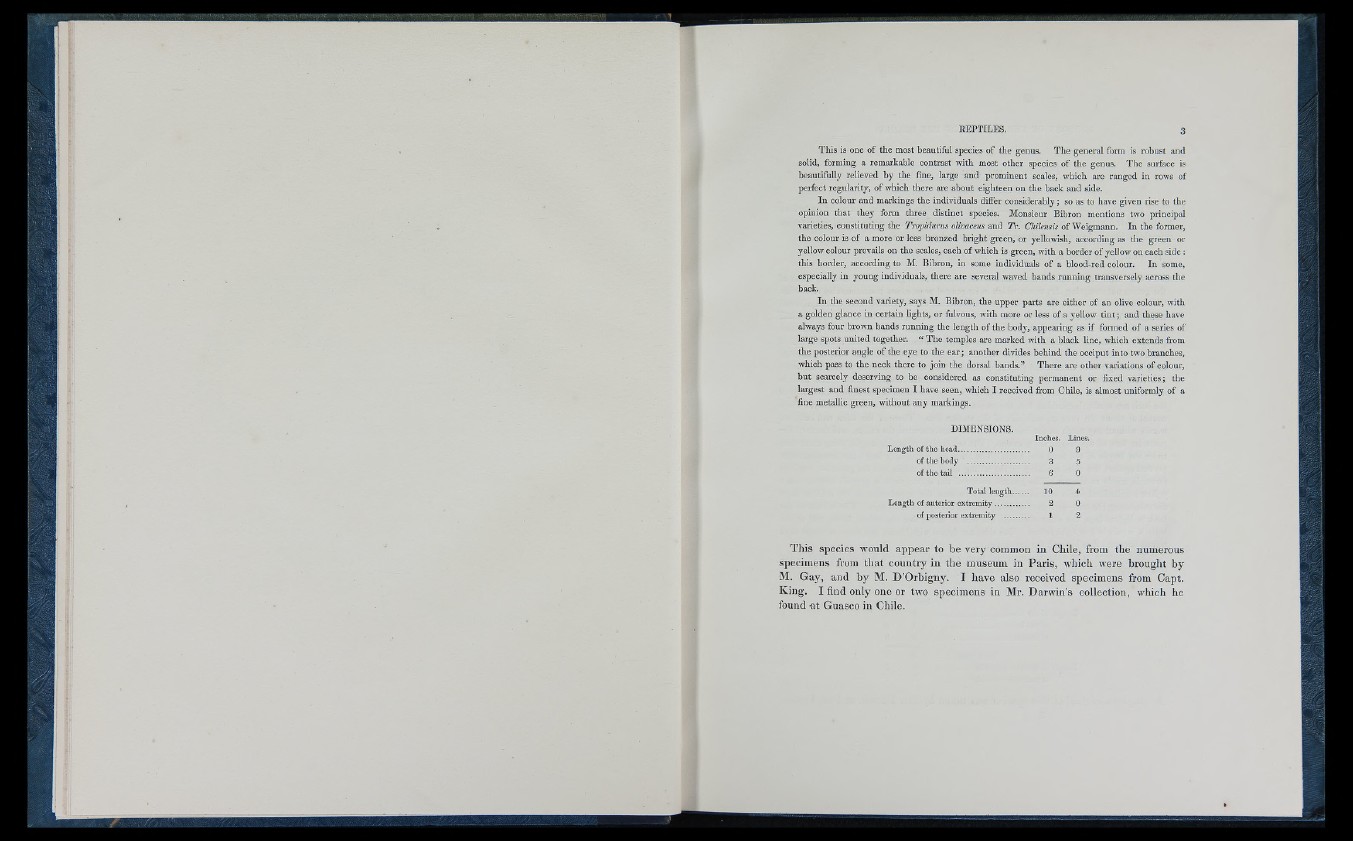
REPTILES. 3
T h is is one o f th e most beautiful species o f th e genus. T h e g en e ral form is robust and
solid, forming a remarkable contra st w ith most o th e r species o f th e genus. T h e surface is
beautifully relieved b y th e fine, large and p rom in en t scales, which are ra n g ed in rows o f
perfec t regula rity, o f w hich th e re are ab o u t e ig h tee n on th e back a n d side.
I n colour an d mark in g s th e individuals differ considerably ; so as to have given rise to the
opinion th a t th ey form th re e d is tin c t species. Monsieur Bibron mentions two principal
varieties, co n stitu tin g th e Tropidurus olivaceus and T r . Chilensis o f W eigmann. I n th e former,
th e colour is o f a more or less bronz ed b rig h t gre en , or yellowish, according as th e g re en or
yellow colour prevails on th e scales, each o f w hich is gre en, with a b o rd e r o f yellow on ea ch s id e :
this borde r, according to M. Bib ro n , in some individuals o f a blood-red colour. I n some,
especially in y o ung individuals, th e re are several waved bands ru n n in g transversely across the
back.
In th e second varie ty, says M. Bibron, th e u p p e r p a rts are e ith e r o f an olive colour, with
a golden glance in c e rtain lights, or fulvous, with more or less o f a yellow t i n t ; an d these have
always four brown bands ru n n in g tlie len g th o f th e body, appe aring as i f formed o f a series o f
large spots u n ite d together. “ T h e temples are mark ed with a black line, which ex ten d s from
th e posterior angle o f th e eye to th e e a r; an o th e r divides b eh in d th e occ iput in to two branches,
which pass to th e neck th e re to jo in th e dorsal b ands.” T h e re are o th e r variations o f colour,
b u t scarcely deserving to be considered as co n stitu tin g p e rm a n en t o r fixed v arie tie s ; the
large st an d finest specimen I have seen, which I received from Chile, is almost uniformly o f a
fine metallic gre en, w ith o u t a n y markings.
DIMENSIONS.
Inches. Lines.
Length of the head................................... 0 9
of the body .............................. 3 5
of the tail ................................... 6 0
Totallength 10 4
Length of anterior extremity................ 2 0
of posterior extremity ............ 1 2
This species would appear to be very common in Chile, from the numerous
specimens from that country in the museum in Paris, which were brought by
M. Gay, and by M. D ’Orbigny. I have also received specimens from Capt.
King. I find only one or two specimens in Mr. Darwin’s collection, which he
found a t Guasco in Chile.